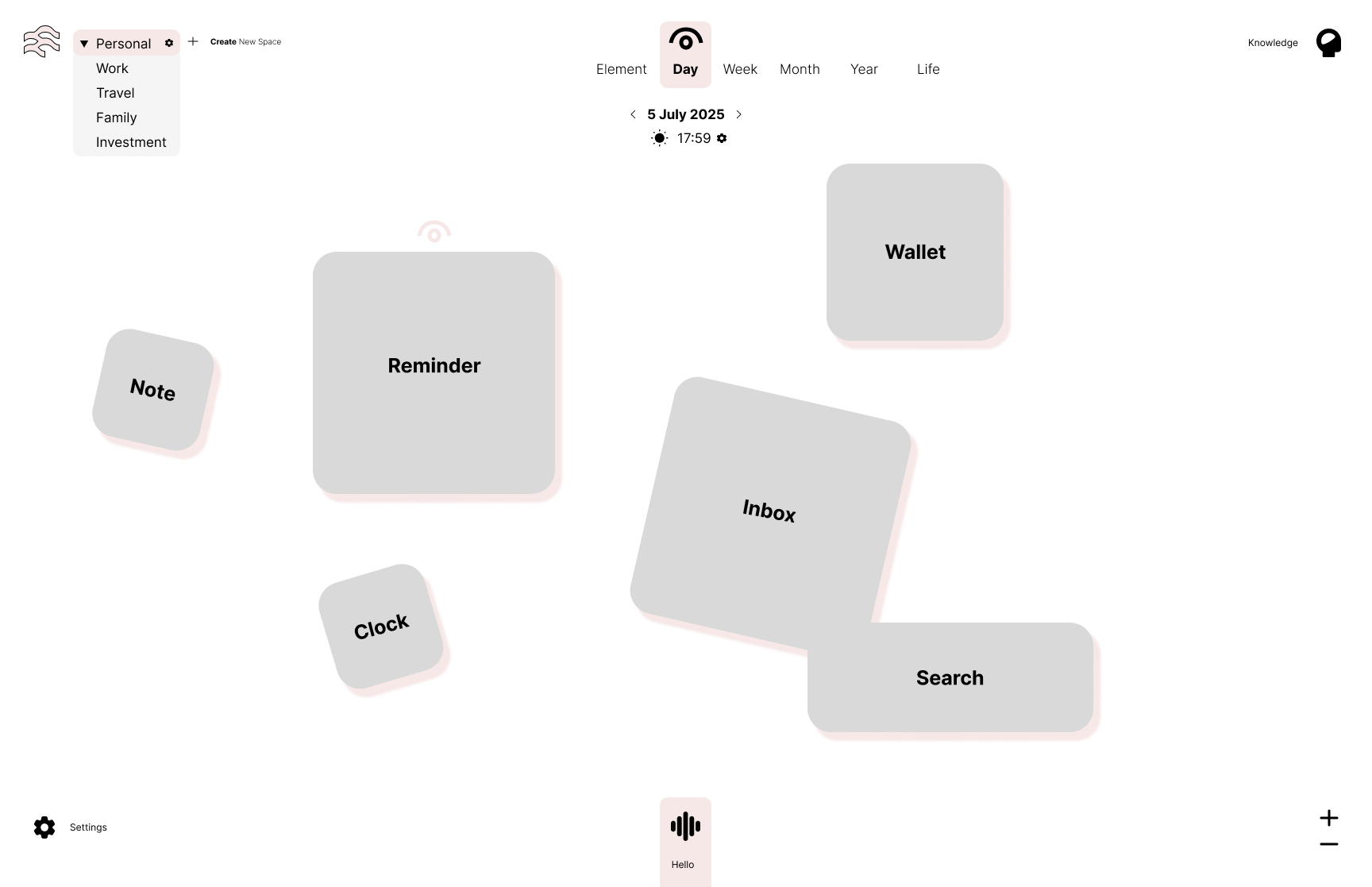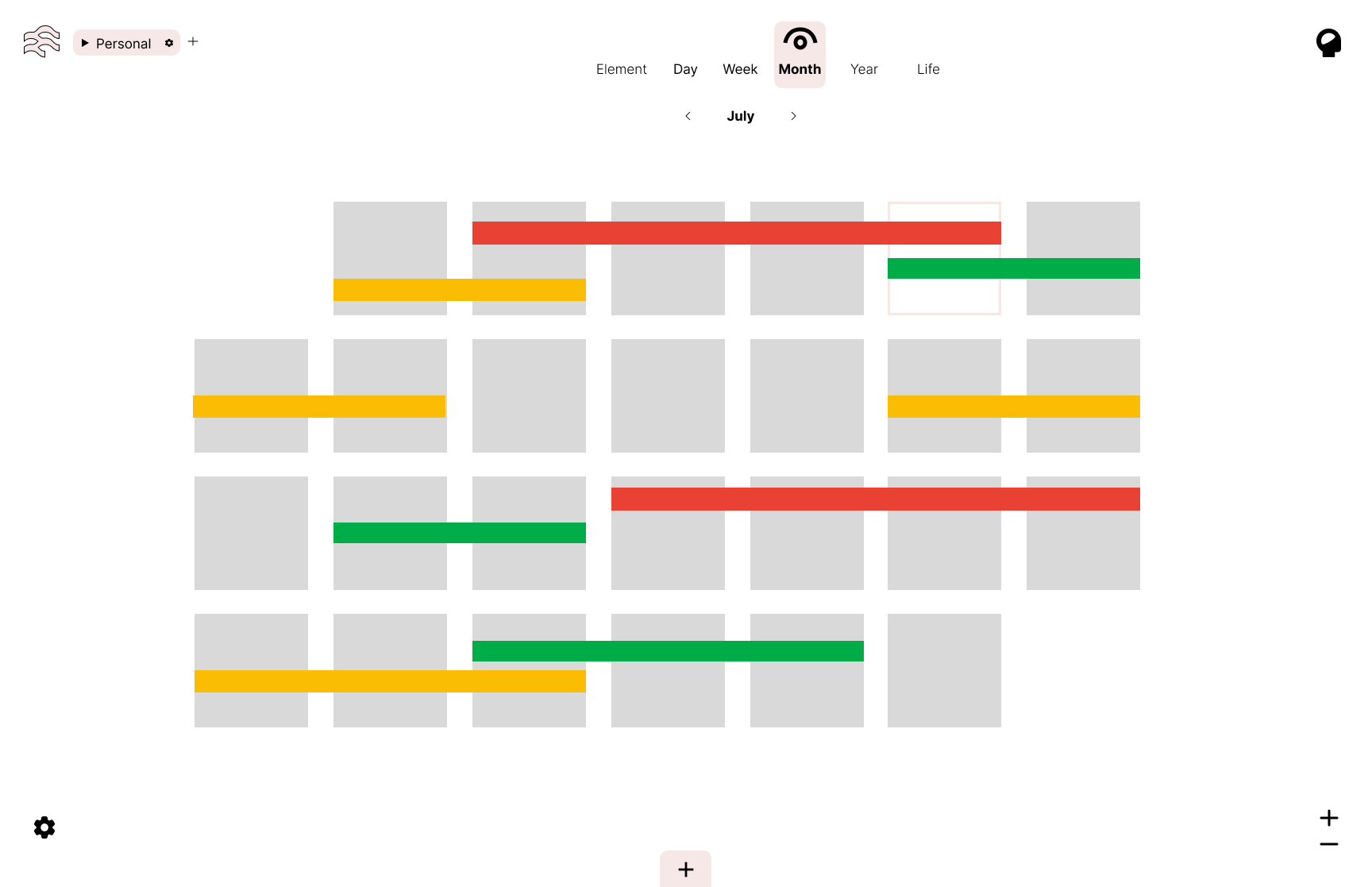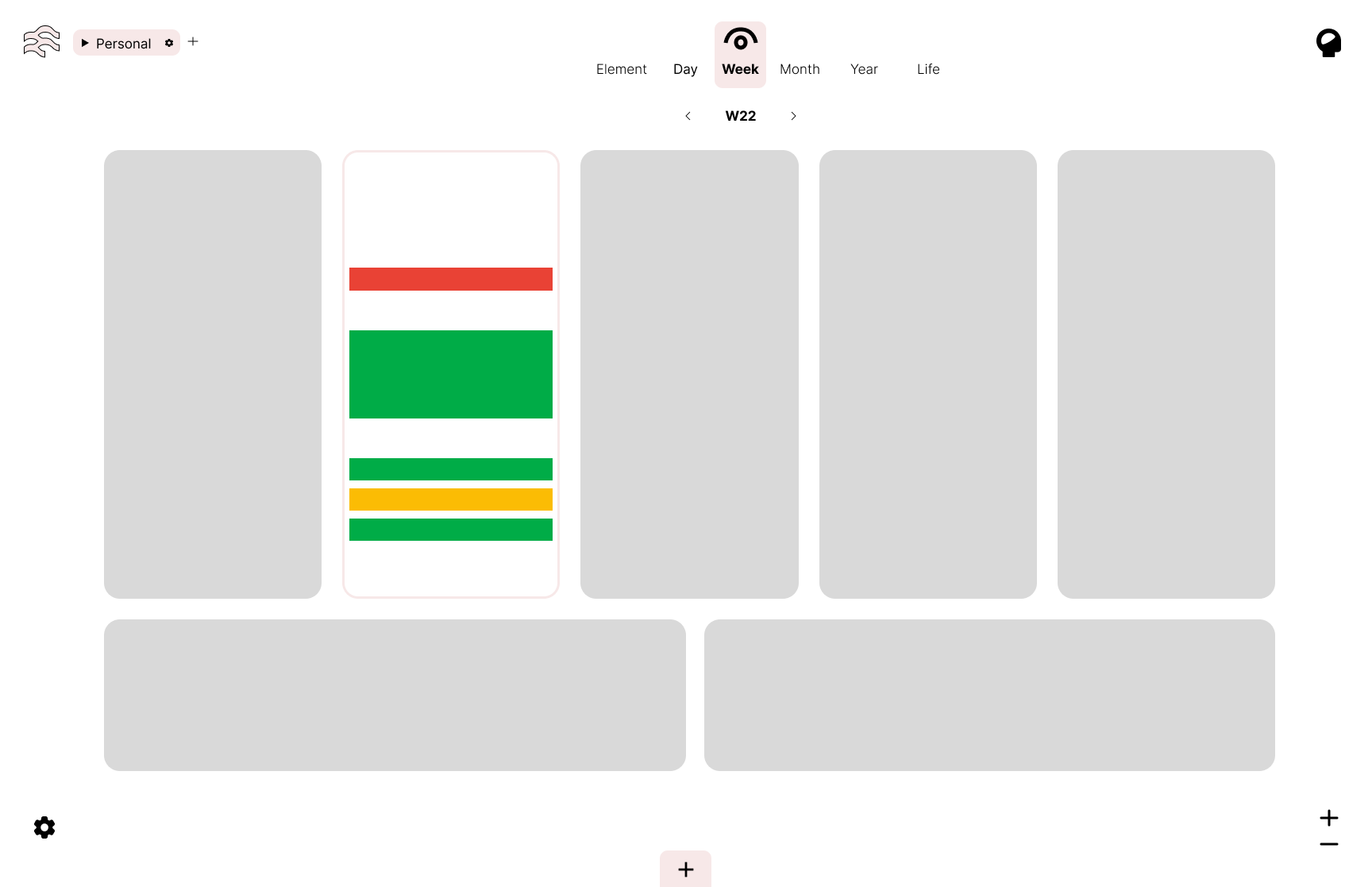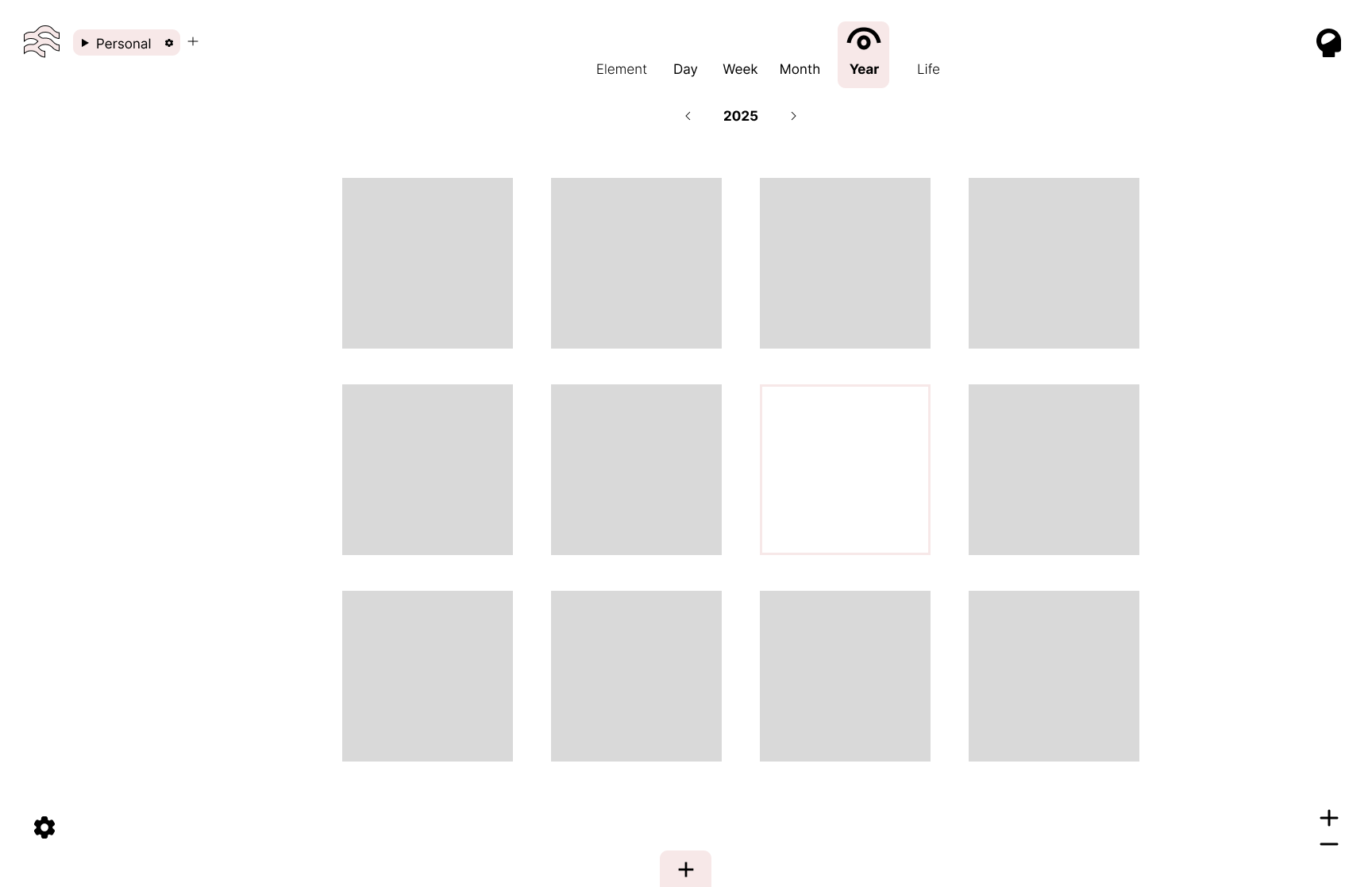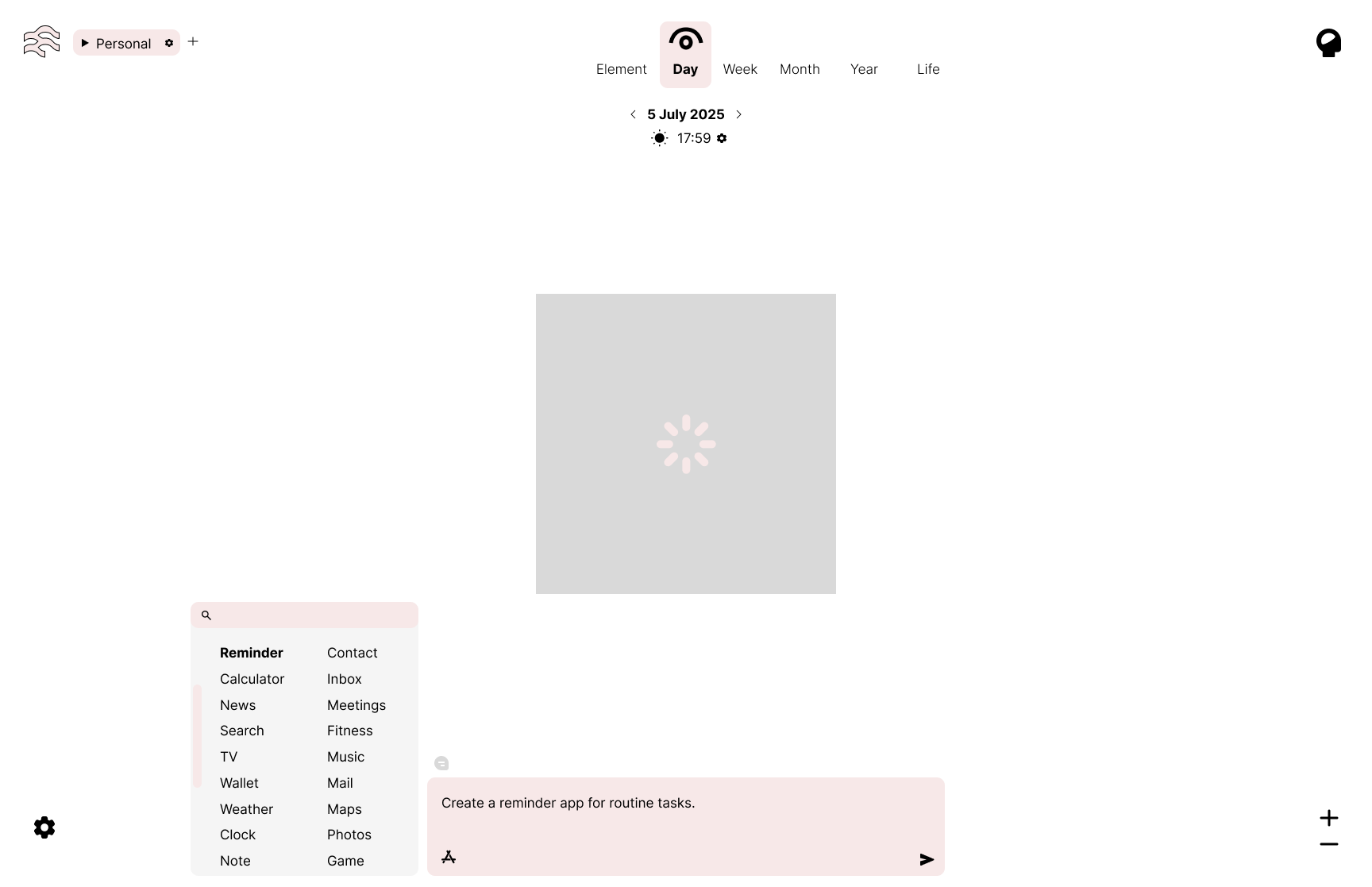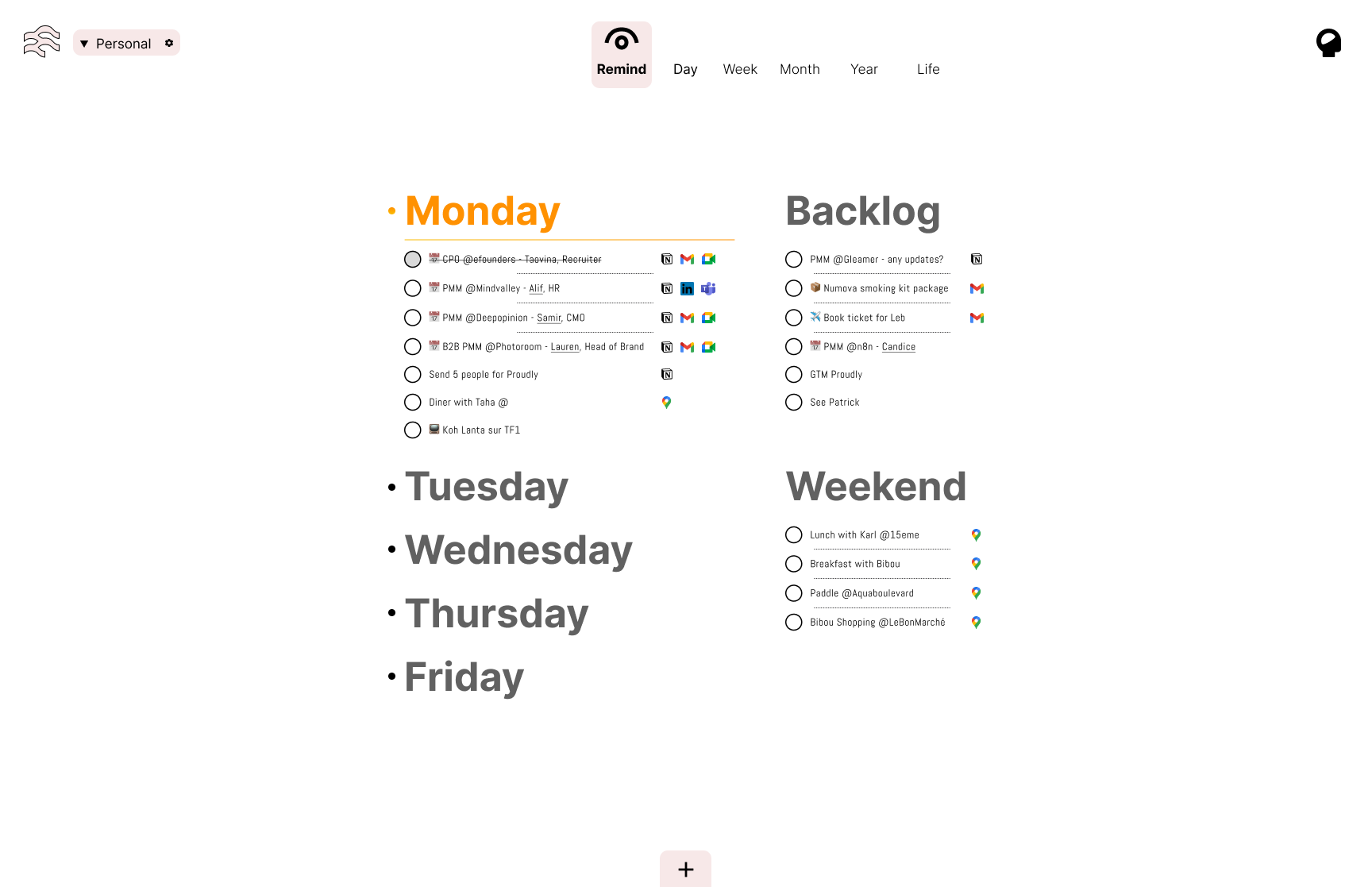12 min


- vibemind.space
- Vision: @Syntheo
- Market
- Name?
- Brainstorming
- Go to Market
- Landing Page - what’s wrong?
- ✅ Quadropic.com — Rewritten Homepage Copy & Structure
- Dailies
- ❌ The Problem
- ✅ The Shift
- 🔥 Core Features
- 🌌 Taglines We’re Exploring
- 🧭 How It Works
- 🛠 Sneak Peek
- 🔮 Designed for the Future
- → Ready to reboot your mind's interface?
- 🧠 Name Ideas
- ❌ Problem
- ✅ Solution
- 🧬 Tagline Ideas
- 🔥 Core Features
- 🌍 Optional Differentiators
- 🧭 User Journey
- Resources
vibemind.space
Vision: 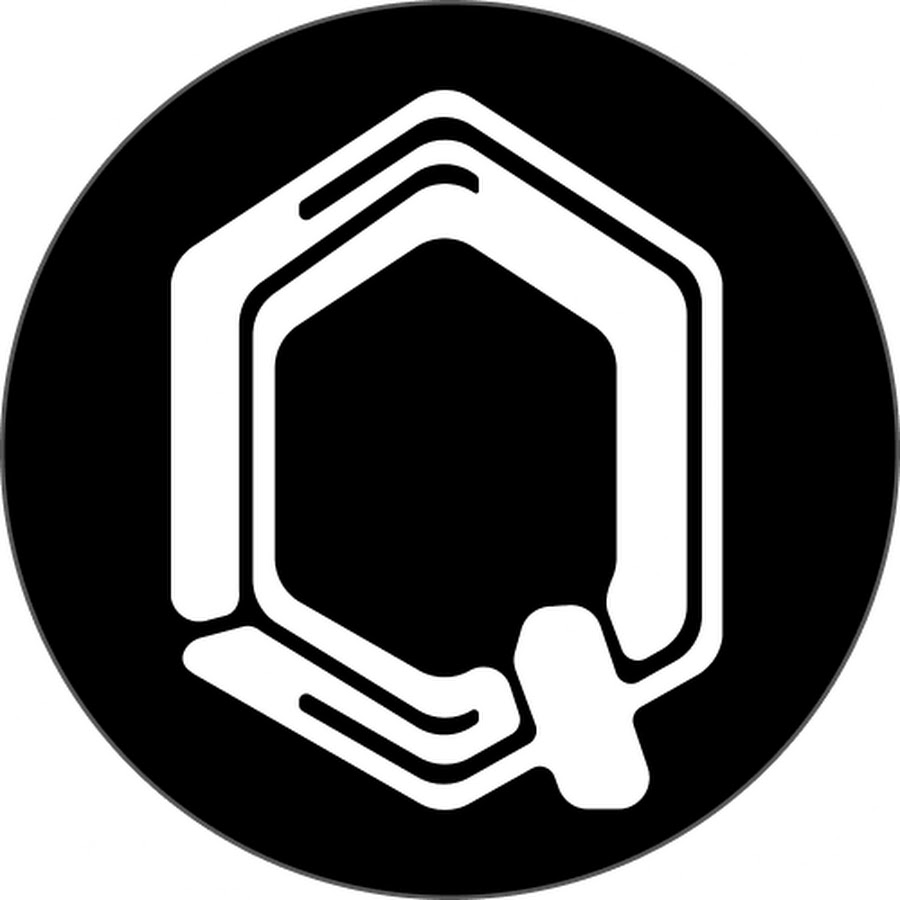 Syntheo
Syntheo

Market
Name?
Brainstorming
Go to Market
Landing Page - what’s wrong?
✅ Quadropic.com — Rewritten Homepage Copy & Structure
Dailies

You are the interface.
A spatial, AI-native operating system.No apps. Just thoughts, spaces, and flow.
❌ The Problem
Operating systems are broken.
- You work inside apps, not ideas.
- Thought, time, action — all siloed.
- AI is bolted on, not built-in.
- You click more than you create.
✅ The Shift
Dailies adapts to you — not the other way around.
- Type. Speak. Move.
- You’re not using tools.
Dailies listens and builds in real time.
You're shaping space.
🔥 Core Features
- Canvas-First UX
- Closed or open spaces (Personas)
- Modular and presets Elements
- Unified Input Bar
- Second brain baked-in
- Autonomy Engine
- Component Store, Not Apps
- Radical Personalization
No windows. Just infinite space.
Zoom, organize, and live by your own logic.
Work, Travel, Health — each has its own context, tools, and AI.
Add, merge, drag & drop Reminders, Notes, Wallets, Inboxes, and more.
Text, voice, code — one field to command them all.
Everything connects: files, memory, time, chat. Auto-linked. Always recallable.
Native AI observes, adapts, builds, prioritizes, evolves your OS with you.
Share blueprints. Build your own tools. No bloat.
Themes, layouts, flows. Your OS = your mind’s mirror.
🌌 Taglines We’re Exploring
“Build your own OS. Live your own way.”
“Control everything. From one input.”
“OS for the way you actually live.”
“The world is your canvas.”
🧭 How It Works
Create a Space → ex: 'Work’
Add components → Calendar, Chat, Notes
Talk to your OS → “Show me tasks from yesterday”
Build new tools → /timeline, @[people], #[tags]
- Launch: Pick your Spaces. Choose how you input (text, voice, gesture).
- Use: Say “Remind me to...” → it's already placed in your Space.
- Expand: Add Clock, Inbox, Notes — OS recommends the layout.
- Switch: Jump from Work to Travel. Whole OS morphs around the new persona.
- Evolve: AI observes your behavior, creates shortcuts, builds new flows.
- Share: Clone, remix, and ship Space blueprints to your tribe.
- Live Inside It: Your thoughts are the system now.
🛠 Sneak Peek
Modular. Adaptive. Yours.
(Drop your email — get access to the first private alpha)
🔮 Designed for the Future
Cross-device, sync-free.
Built from day one as AI-native.
2D/3D spatial canvas.
Minimal mode to God-mode toggle.
→ Ready to reboot your mind's interface?
[Join the Alpha]
🧠 Name Ideas
- Canvas OS
- EveryOS
- Persona
- Void
- CTRL (Control)
- OSD (Operating System Design)
- Elemen (soft, sci-fi tone)
- Dailies (daily rituals but supercharged)
- Spaceframe
- WorldBuilder
❌ Problem
Current OSs are bloated, rigid, and app-centric. People are forced to context-switch, click through endless layers, and use interfaces designed for the past.
- Tools don't adapt to users.
- You work inside apps, not inside your ideas.
- There's zero real integration between thought, time, and action.
- AI is bolted on, not native.
✅ Solution
A spatial AI-native operating system where your thoughts, tasks, spaces, and tools blend. Your input is the root. The system adapts around you — not the other way around.
Type, speak, move — the OS listens, understands, and builds what you need in real time.
🧬 Tagline Ideas
- "You are the interface."
- "Build your own OS, live your own way."
- "Control everything. From one input."
- "No apps. Just thoughts, spaces, and flow."
- "Welcome to your second brain."
- "The world is your canvas."
- "OS for the way you actually live."
🔥 Core Features
- Canvas-first UX
No windows. Just space. Infinite zoom, organize by your logic.
- Spaces (Personas)
Work, Family, Health, Travel — each with its own state, tools, context.

- Modular Elements
Add Reminder, Note, Clock, Wallet, Inbox, Search. Drag, drop, merge, delete.

- Unified Input Field
One bar for voice, text, code — everything flows from there.

- Second Brain Mode
Links everything. Memory, calendar, files, conversations. True knowledge graph.

- Autonomy Engine (AI Native)
AI builds, suggests, prioritizes, and auto-updates based on context, behavior, and your goals.
- No app store, just components
Build what you need. Shareable blueprints.

- Theme & layout personalization
Light/dark, order, style — your OS reflects you.
🌍 Optional Differentiators
- Works across all devices — start something on Mac, continue on phone.
- No traditional UI library: 2D/3D hybrid spatial canvas.
- Future-proof: AI-first architecture, not AI-as-feature.
- Can be used in minimal mode (just input + reminder) or God-mode (full space control).
🧭 User Journey

- Launch → Welcome flow: Choose core Spaces, input style (text/voice), and design preferences.
- Interact → Start with one input: “Remind me to...” → OS creates reminder component inside active Space.
- Flow → Add Inbox + Note + Clock. OS suggests layout.
- Context switch? No. Persona switch. You go from Work to Travel → Entire UI changes (inputs, filters, AI prompts).
- Evolve → AI observes behavior, suggests shortcuts, builds routines, connects data.
- Create → Add components. Share with others. Clone Space templates.
- Live inside it. This OS becomes the extension of your brain.
Resources
 Ideas
Ideas
https://frontend-production-1467.up.railway.app/dashboard/projects/4
